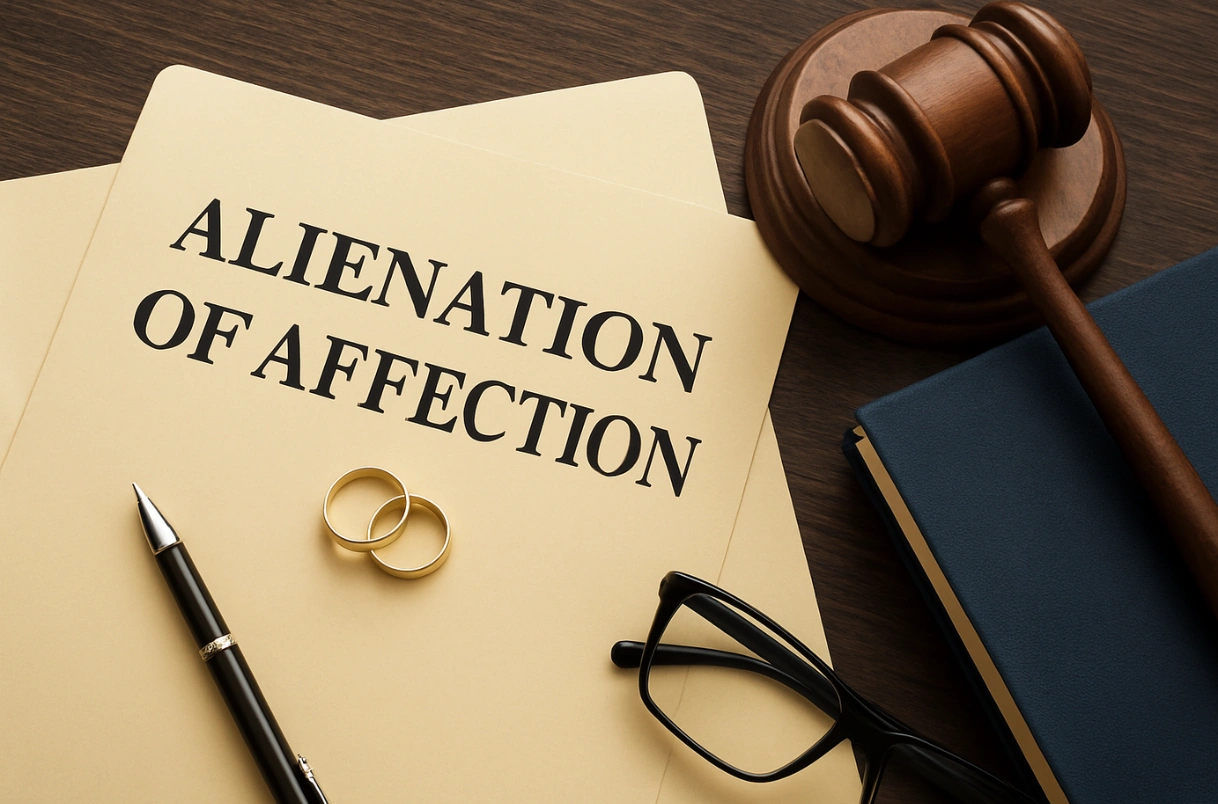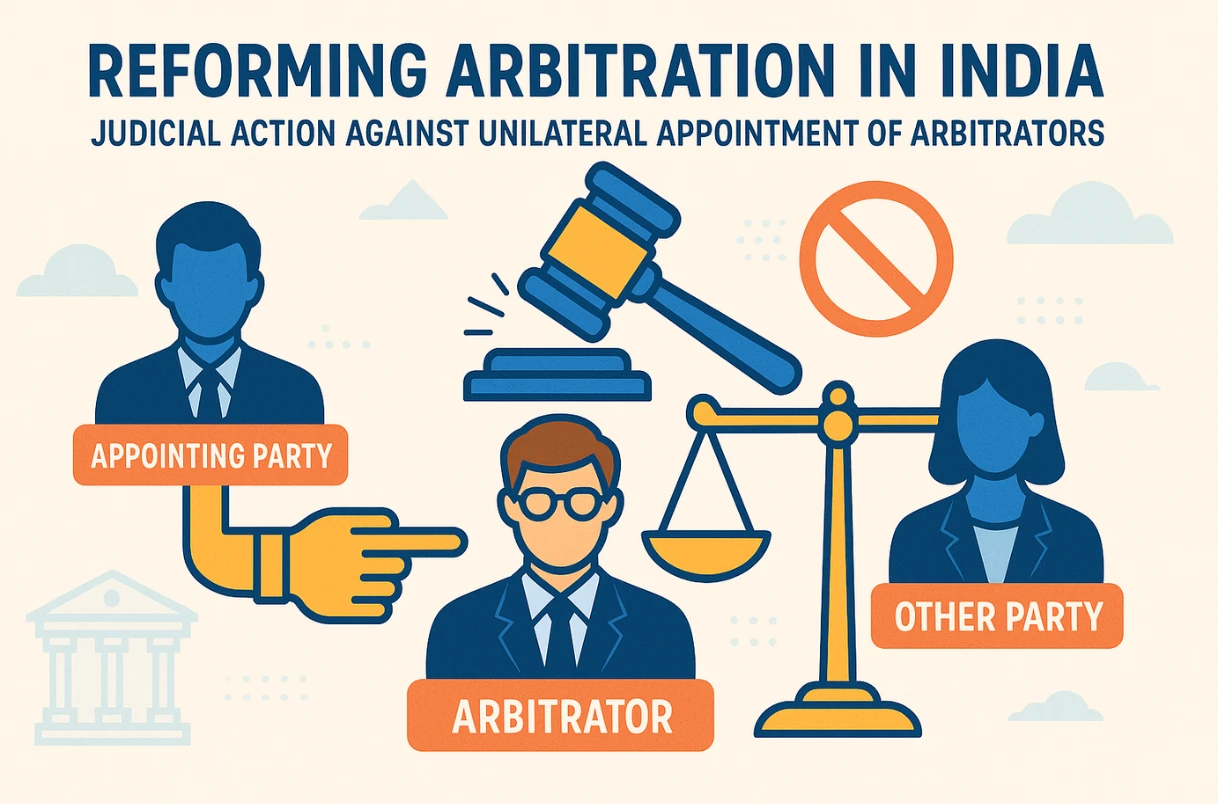TORT OF ALIENATION OF AFFECTION

By – Shreya Dubey and Tannishtha Chatterjee
Table of Contents
Introduction
Alienation of Affection (AOA) may sound like the title of a romance novel, but it is in fact one of the last surviving “heart balm” torts in the United States. Heart balm actions, like breach of promise to marry, seduction, conversions and alienation of affection, originated in 17th-century English common law. They were designed to provide a legal remedy, often in money damages, for wrongs that disrupted marriage or courtship. In truth, they also reflected the old belief that a wife was her husband’s property, and that interference with marriage was akin to trespassing on land or stealing livestock.
Over time, most states in America abandoned these suits, worried they encouraged blackmail, extortion, and scandal. Yet, in North Carolina, alienation of affection and criminal conversation remain very much alive. Every year, hundreds of cases are filed, some ending with jaw-dropping jury awards in the millions of dollars. Unlike their origins, these claims are now open to both men and women, though the underlying logic still rests on an archaic idea: that love, loyalty, and even intimacy can be measured, and punished, through the courts.
In India, this debate recently gained fresh momentum with the Delhi High Court’s decision in Shelly Mahajan v. Ms. Bhanushree Bahl & Anr.1 In this case, the Court held that a civil suit for damages on the ground of alienation of affection is maintainable under Indian law. The plaintiff, Shelly Mahajan, alleged that her husband’s business associate, Ms. Bahl, had intentionally interfered in her marriage, resulting in the breakdown of her marital relationship and companionship. Importantly, Mahajan did not seek matrimonial relief against her husband but rather damages from the alleged third-party wrongdoer.
The High Court clarified that alienation of affection, though not codified in Indian statutes, has been recognised by the Supreme Court in principle as a civil tort. The Court further held that such claims are distinct from matrimonial disputes and thus fall within the jurisdiction of civil courts rather than family courts. While acknowledging the importance of personal autonomy in relationships, the judgment underscored that marital companionship and consortium are legally protected interests, and wrongful third-party interference may invite civil liability. By allowing the case to proceed to trial, the Delhi High Court has signalled that AOA, though rare, continues to be a viable tort action in India.
ANALYSIS OF DELHI HIGH COURT JUDGMENT
Facts and Allegations in the Case
The Plaintiff married her husband (Defendant No. 2) in 2012 and were blessed with twins in the year 2018. Things reportedly took a turn when another woman, Ms. Bhanushree Bahl (Defendant No. 1), joined her husband’s business in 2021. Plaintiff alleged that Defendant No.1 began spending an unusual amount of time with her husband at work, during travel, and even socially. By 2023, the Plaintiff claimed to have found romantic/intimate messages and letters suggesting an affair. Her husband later filed for divorce.
Instead of pursuing maintenance proceedings against her husband, Plaintiff opted to sue Ms. Bahl and her husband, in civil court, for “Alienation of Affection” (AoA), accusing her of intentionally breaking the marriage. Plaintiff claimed that this conduct led to the withdrawal of her husband’s affection and companionship, and that she suffered emotional harm as a result.
Arguments by the Parties
The defendants argued that the suit was not maintainable, contending that issues involving marriage fall within the exclusive jurisdiction of the Family Courts. They also relied on the Supreme Court’s decision in Joseph Shine v. Union of India2, which decriminalised adultery and upheld the autonomy of individuals in personal relationships. The plaintiff, however, submitted that Indian law recognises alienation of affection as an intentional tort, and that a third party’s wrongful interference in a marriage can give rise to civil liability.
The Hon’ble High Court observed that although alienation of affection is not explicitly provided for in Indian statutes, it has been recognised in principle by the Supreme Court in Pinakin Mahipatray Rawal v. State of Gujarat3 and Indra Sarma v. V.K.V. Sarma.4 Although, in the said precedents, the Supreme Court did not venture into merits of the claims since no Indian statute expressly provides for such an action, however the apex court recognised that the concept remains judicially acknowledged but not formally adopted. Owing to the judicial recognition of the concept in the past on many occasions, the Delhi Court observed that a claim based on wrongful interference with a marriage can constitute a valid civil cause of action. It clarified that such a claim is distinct from matrimonial disputes between spouses and, therefore, falls within the jurisdiction of civil courts rather than family courts.
The Court further noted that while personal autonomy in relationships must be respected, marital companionship and consortium are legally protected interests. Wrongful conduct by a third party that intentionally disrupts a marriage may, therefore, lead to civil consequences. The Delhi High Court did not decide the merits of the case but held that the plaint disclosed a valid cause of action. Accordingly, it directed that summons be issued, and the proceedings continue before the civil court.
Significance and Broader Implications
This decision is significant because it reaffirms that marriage in India is not only a personal but also a legal relationship, capable of protection through civil remedies for adultery. While criminal liability for adultery no longer exists after Joseph Shine judgement, the Delhi High Court’s ruling suggests that civil remedies for intentional interference with marital relations may still be available. The judgment marks an important development in Indian tort law, recognising that emotional and relational harm caused by a third party may, in appropriate cases, be compensable.
ALIENATION OF AFFECTION AROUND THE GLOBE
- England and Wales
Heart-balm torts originated in England but were gradually abolished during the twentieth century. Historically, English law recognised several actions such as criminal conversation (for adultery), enticement (persuading a spouse to leave), and wrongful harbouring (refusing to allow a separated spouse to return). These actions were rooted in the old notion of a spouse, mainly a wife, being the husband’s property. The Law Reform Committee in 1963 recommended their abolition, and Parliament implemented that recommendation through legislation in 1970, effectively ending all traditional heart-balm actions in England and Wales. The only surviving related claim is loss of consortium, which concerns compensation for loss of companionship or services due to injury rather than adultery or emotional interference.
- Canada
Canada followed a similar path. The Supreme Court of Canada in Kungl v. Schiefer5 observed that such claims were outdated and inconsistent with modern views of marriage and gender equality. Before that judgment, most provinces had already abolished the torts one by one through provincial statutes. Today, no province in Canada recognises alienation of affection or similar actions. Fault or misconduct may still be relevant in limited circumstances in family law proceedings, but there is no separate civil suit for marital interference.
- Australia
Australia abolished alienation of affection and related torts through the Family Law Act, 1975. The Act introduced a “no-fault” divorce system, where the only ground for divorce is the irretrievable breakdown of marriage, proven by 12 months of separation. This change made personal blame or third-party interference legally irrelevant to marital dissolution. However, the conduct of the spouses can still be considered by courts when dividing property or determining custody, but there is no independent tort claim for interference in marriage.
- United States
The United States has followed a mixed approach. Historically, every U.S. state recognised some form of heart-balm tort. However, by the mid-20th century, many states repealed them after concerns about misuse and blackmail. Indiana was the first to abolish all heart-balm actions in 1935, and by 1952, sixteen more states had followed.
Currently, Alienation of Affection remains legally recognised in only a few states, North Carolina, Mississippi, South Dakota, Utah, Hawaii, Illinois, and New Mexico (though the last three impose strict limits)6.
- North Carolina is the most active jurisdiction, with over 200 filings per year in the 2000s.
- Mississippi also retains the tort and reaffirmed it in Fitch v. Valentine7.
- South Dakota upholds it under statute SDCL 20-9-7, despite repealing adultery as a crime in 1976.
- Utah preserved AoA in Norton v. Macfarlane8, while abolishing criminal conversation.
- Hawaii, Illinois, and New Mexico recognise the tort in theory but impose such strict proof requirements that successful outcomes are rare. In most other states, the tort has been abolished or severely limited, and courts discourage its use due to concerns about privacy and emotional exploitation.
- Continental Europe and Latin America
Most continental European countries, following civil-law traditions, have never recognised alienation of affection as a separate tort. Adultery may still have moral or religious significance, but not civil consequences. In Latin America, adultery was historically a criminal offence with gender-based double standards, women were punished more severely, but modern reforms have decriminalised it and removed civil liability for third parties.
Across common-law jurisdictions, alienation of affection has been largely abolished as inconsistent with modern family law and gender equality. Only a handful of U.S. states and, more recently, Delhi High Court, has continued to recognise it in limited form.
The global trend has been to replace fault-based marital torts with no-fault divorce systems, though some societies still see value in recognising emotional and relational harm caused by outsiders. India’s recent judicial recognition of AoA stands out as a rare revival of an old common-law remedy in a contemporary setting.
CONCLUSION
Alienation of affection (AoA) means wrongful interference by a third person in a marriage, leading to loss of love, care, and companionship between spouses. It is based on the idea that marriage is not only an emotional relationship but also a legally protected one. If someone intentionally causes harm to that relationship, the affected spouse can seek damages. Though the concept comes from old common law, it still raises important questions about how far the law should protect emotional bonds within a marriage.
The Delhi High Court’s ruling in Shelly Mahajan v. Ms. Bhanushree Bahl & Anr. is a major step in this direction. The Court held that such a case can be filed as a civil suit and is not limited to family court matters. It recognised that while every adult has personal freedom, that freedom does not include the right to knowingly damage another person’s marriage. The decision allows affected spouses to seek legal remedies for emotional harm caused by third-party interference and may guide how future cases of this kind are handled in India. Quantification of the damages in such cases will be a different challenge altogether.
Comparative Perspective and Future Outlook
Across the world, however, most countries have moved away from such claims. Nations like England, Canada, and Australia have abolished these kinds of lawsuits, considering them outdated and open to misuse. Only a few states in the United States still allow them, and even there, courts are very cautious. India’s approach is therefore unique; it seeks to protect the dignity and trust within marriage while still respecting individual rights and personal choices. How courts apply this balance in future cases will decide whether this old concept finds a new place in modern Indian law.
FAQs
-
What is the tort of alienation of affection?
Alienation of affection is a civil wrong also called a “heart-balm” tort—where one spouse seeks damages from a third person for intentionally disrupting their marriage. It is based on the idea that marriage includes a legally protected right to love, care, and companionship. To succeed, the aggrieved spouse must show that the third party’s deliberate actions directly caused the loss of marital affection, resulting in emotional and relational harm that the law can recognise and compensate.
-
Is alienation of affection recognised under Indian law?
Alienation of affection is not codified in Indian statutes, but the Delhi High Court in Shelly Mahajan v. Bhanushree Bahl & Anr. (2025) recognised it as a valid civil tort. The ruling allows a spouse to claim damages from a third person who intentionally interferes with their marriage, leading to the breakdown of companionship and affection.
-
What did the Delhi High Court decide in Shelly Mahajan v. Bhanushree Bahl?
The Court held that although adultery is no longer a criminal offence after Joseph Shine v. Union of India, wrongful interference by a third party in a marriage can still attract civil liability. It clarified that alienation of affection is a tort recognised in principle by the Supreme Court and that such a claim can be pursued independently before a civil court.
-
Is alienation of affection a civil or family law matter in India?
Alienation of affection falls within civil law, not family law. A spouse may file a civil suit for damages against a third party whose deliberate conduct caused the loss of marital love, care, or companionship. This claim is separate from divorce, maintenance, or custody proceedings, which are handled by family courts.
-
How does the tort of alienation of affection differ from adultery?
Adultery refers specifically to voluntary sexual relations between a married person and someone other than their spouse. Alienation of affection, however, extends beyond sexual conduct it covers any intentional act by a third person that causes emotional estrangement or loss of affection between spouses, even without proof of adultery.
-
What are heart balm torts and where did they originate?
Heart-balm torts are civil actions historically used to claim compensation for emotional injury arising from interference in romantic or marital relationships such as breach of promise to marry, seduction, or alienation of affection. They originated in 17th-century England, gained popularity in the United States in the 19th century, and were later criticised and abolished in most jurisdictions due to misuse and moral concerns.
-
Which countries still recognise alienation of affection lawsuits?
Today, the tort survives only in a handful of U.S. states such as North Carolina, Mississippi, South Dakota, Utah, Hawaii, Illinois, and New Mexico and, following Shelly Mahajan, has been judicially recognised in India. Most other common-law jurisdictions, including England, Canada, and Australia, have abolished such claims.
-
What damages can be claimed under alienation of affection in India?
The scope of damages under this tort in India is still developing. Following the Delhi High Court’s 2025 ruling, a spouse may claim compensation for emotional distress, humiliation, and loss of companionship caused by wrongful third-party interference. However, there are no fixed standards yet for calculating such damages, and each case will depend on its specific facts and evidence.
-
How does the Joseph Shine judgment affect this tort?
In Joseph Shine v. Union of India (2018), the Supreme Court struck down Section 497 of the IPC, decriminalising adultery and recognising it solely as a civil ground for divorce. While the decision removed criminal penalties, it did not bar civil remedies. The Delhi High Court’s recognition of alienation of affection builds on that distinction—acknowledging civil consequences for intentional marital interference without reintroducing criminal liability.
-
Why is the Delhi High Court’s recognition of AoA significant?
The ruling revives an old common-law remedy in a modern legal context. It provides spouses an avenue to seek redress for intentional emotional harm caused by outsiders while balancing it with personal autonomy. This marks a rare instance of an Indian court recognising a fault-based civil claim in marriage, signalling a gradual expansion of tort law into the realm of personal relationships.
References –
- CS(OS) 602/2025
- 2019 (3) SCC 39
- (2013) 10 SCC 48
- (2013) 15 SCC 755
- CanLII 5 (SCC)
- https://law.stackexchange.com/questions/45288/do-homewrecker-laws-exist-in-any-other-western-country-than-united-states (last accessed 08.10.2025)
- 959 So. 2d 1012 (2007)
- 818 P.2d 8 (Utah 1991)


